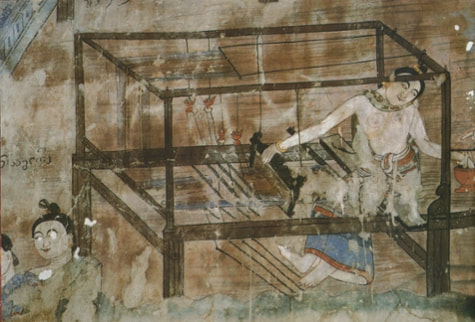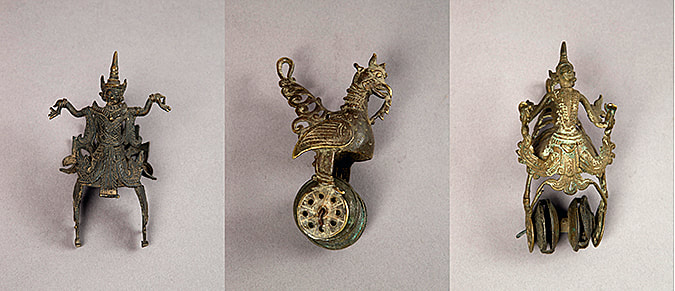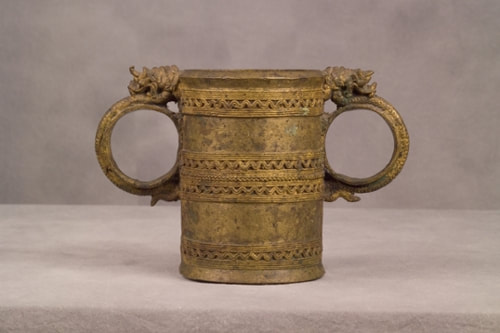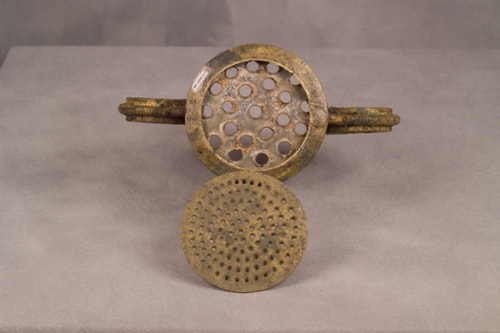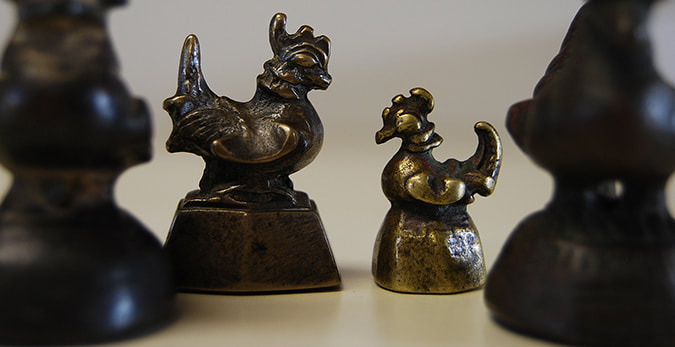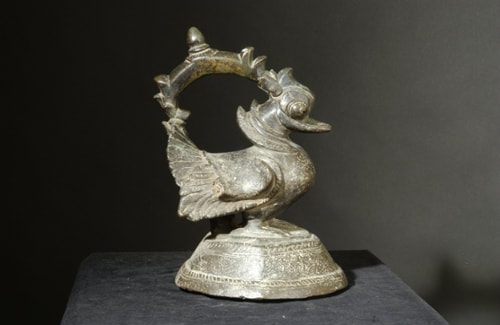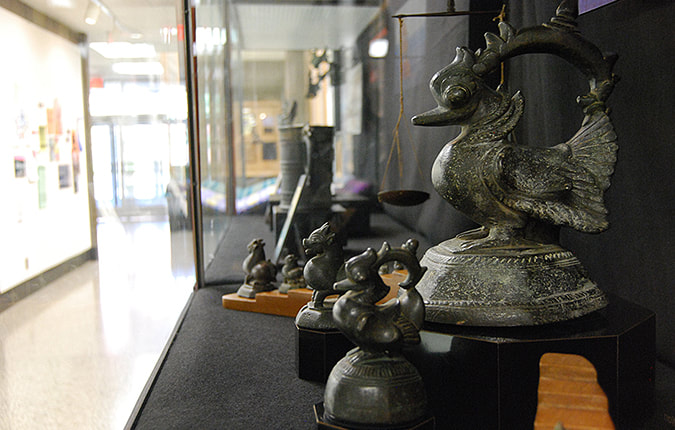Beyond Aesthetics: The Art of Burmese Metalworking
October 2015 -2016
Jack Arends School of Art and Design, 2nd Floor
Northern Illinois University
Dekalb, Illinois
Jack Arends School of Art and Design, 2nd Floor
Northern Illinois University
Dekalb, Illinois
The Art of Loom PulleysBurmese mythology is intricately woven within the fabric of everyday life. For this reason, it is of no surprise to find mythical motifs as common modes of inspiration in Burmese textiles and metal work.
Textile production in Burma dates back to AD 500-900. The local textile industry became a prominent part of Burmese culture. The development of the weaving loom not only allowed production of intricate fabrics but also gave artisans an additional space to introduce Burmese ornamentation. Loom pulleys proved to be an excellent source of inspiration because they were suspended in mid air in order to hold threads of cotton. |
Header: BC97.2.53F, Bronze, Kinnari; BC97.2.53D, Bronze, Karaweik; BC97.2.53K, Bronze, Kinnari. Objects from Burma Art Collection; Photographs courtesy Scott Walstrom, NIU Creative Services.)
The Art of Naga Containers
Naga Container, Bronze, Late 19th Century, BC2005.2.07
The Art of Opium Weights
Animal folklore is prevalent in Burmese mythology and religion. Weights, loom pulleys, textiles, everyday household items, and everything in between, were commonly decorated with animal forms.
The earliest recorded Burmese weights are from the 13th century and only mimicked bird and quadruped shapes. They were used with balance scales in early commerce and most commonly ranged in weight from ½ to 100 ticals (3.5lbs). Weights and scales were often stored in boxes carved with intricate patterns.
Art collectors have referred to these weights as “opium weights.” However, art historians refer to them as graduated, or standard weights because only smaller weights were used in opium trade.
The earliest recorded Burmese weights are from the 13th century and only mimicked bird and quadruped shapes. They were used with balance scales in early commerce and most commonly ranged in weight from ½ to 100 ticals (3.5lbs). Weights and scales were often stored in boxes carved with intricate patterns.
Art collectors have referred to these weights as “opium weights.” However, art historians refer to them as graduated, or standard weights because only smaller weights were used in opium trade.
|
The Burmese government produced and regulated standard weights. Although forgeries were made, the court made it a criminal offence by the 18th century. Burmese weights were popular until British conquest in 1885. During this period, the British brought their own versions of plain circular standardized weights.
|
Curated by Graduate Student Carmin Berchiolly, NIU Graduate Markie Striegel, and Dr. Catherine Raymond; with special thanks to Andre Berchiolly.
